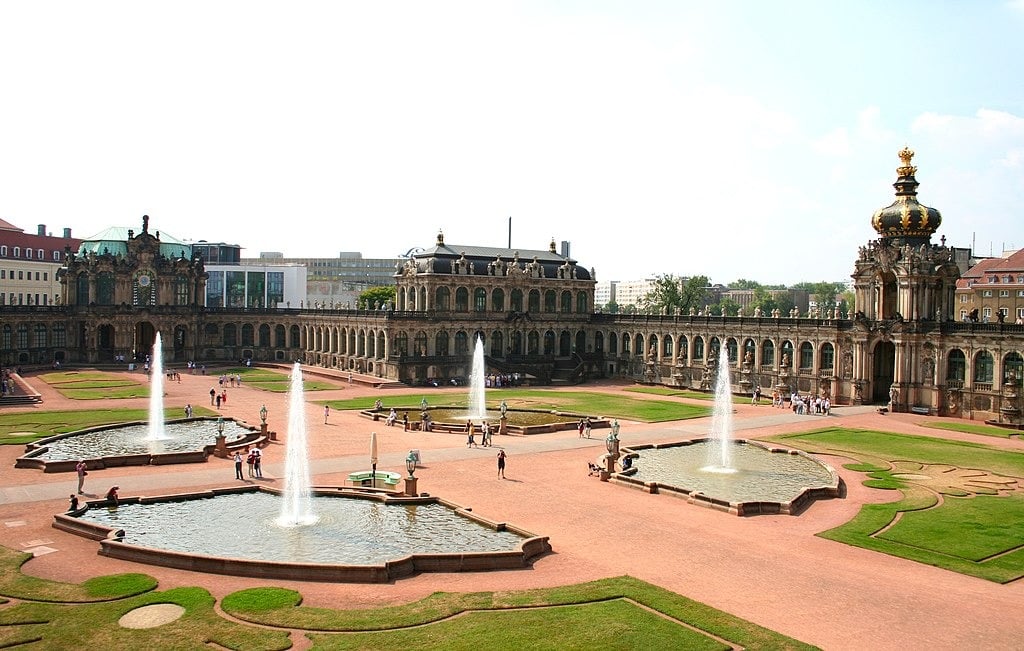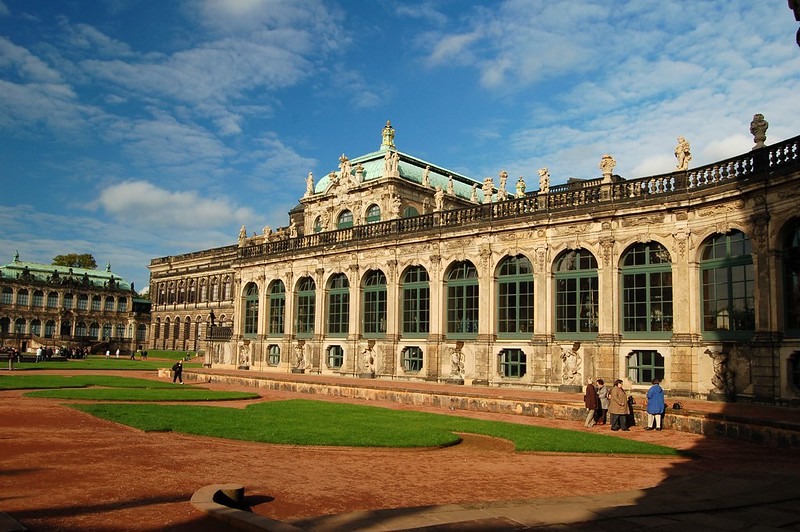Dresden’s Zwinger Palace: A Masterpiece Of Baroque Architecture Dating Back To The Time Of Augustus The Strong
If you ever find yourself wandering through the beautiful city of Dresden, Germany, one place you absolutely have to visit is the Zwinger Palace.
The Zwinger Palace is a palatial complex with gardens.
It is one of the most important buildings of the Baroque period in Germany.

The Zwinger Palace was designed by the visionary architect Matthäus Daniel Pöppelmann.

Where does the name “Zwinger” come from?
The name “Zwinger” harks back to medieval fortifications, referring to the space between the outer and inner walls of a fortress.
Back then, this space was meant to help defend the city.
But by the time construction started on the Zwinger Palace in 1709, its purpose had changed entirely.
Instead of serving as a defensive structure, this area was transformed into an orangery and a lavish garden designed to impress guests with its beauty.

The man behind this ambitious project was Augustus the Strong, the Elector of Saxony and King of Poland.
He envisioned the Zwinger as a spectacular festival area —a place to host lavish events and showcase his wealth and power.
Though it was originally intended to be the forecourt of an even grander castle that was never built, the Zwinger still became a symbol of Augustus’s reign and his love for opulence.

A Masterpiece Of Baroque Style
The palace was designed by the brilliant architect Matthäus Daniel Pöppelmann.
It is a masterpiece of Baroque style, with intricate detailing that’s just breathtaking.
The pavilions are richly decorated with balustrades, statues, and vases, speaking of the splendor during the reign of Augustus the Strong.

Notably, the Crown Gate (Kronentor), adorned with a gilded crown, is the most photographed feature of the palace and an iconic symbol of Dresden.

The Zwinger wasn’t actually completed in Augustus’s lifetime.
It wasn’t until the 19th century, under the direction of architect Gottfried Semper, that the palace was fully enclosed with the addition of the Semper Gallery.
This gallery played a crucial role in the Zwinger’s transformation into a museum complex.

The Zwinger Today: A Hub of Art and Culture
The Zwinger Palace is now home to several world-renowned museums.
The Gemäldegalerie Alte Meister (Old Masters Picture Gallery) houses an extraordinary collection of paintings from the Renaissance to the Baroque period, including Raphael’s “Sistine Madonna.”

The Dresden Porcelain Collection, one of the largest in the world, showcases exquisite pieces that reflect the city’s historical significance in porcelain manufacturing.
Another highlight is the Mathematisch-Physikalischer Salon (Royal Cabinet of Mathematical and Physical Instruments), which displays an array of scientific instruments from different eras.

The Nymph Bath, a stunning Baroque fountain within the palace complex, adds to the Zwinger’s charm.

The Palace Still Stands After The Heavy Bombard
The Zwinger Palace has not only been a witness to history but also a survivor of it.
During World War II, Dresden was heavily bombed.
The Zwinger was extensively damaged by the carpet bombing raids of 13–15 February 1945.

The reconstruction of the building was supported by the Soviet military administration and started in 1945.
Parts of the restored complex were opened to the public in 1951.

By 1963, the palace was brought back to its former glory.
Today, it stands as a symbol of Dresden’s resilience and dedication to preserving its cultural heritage.

